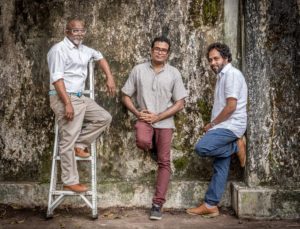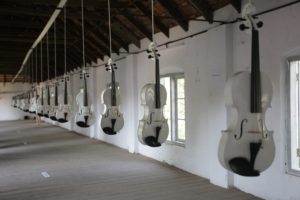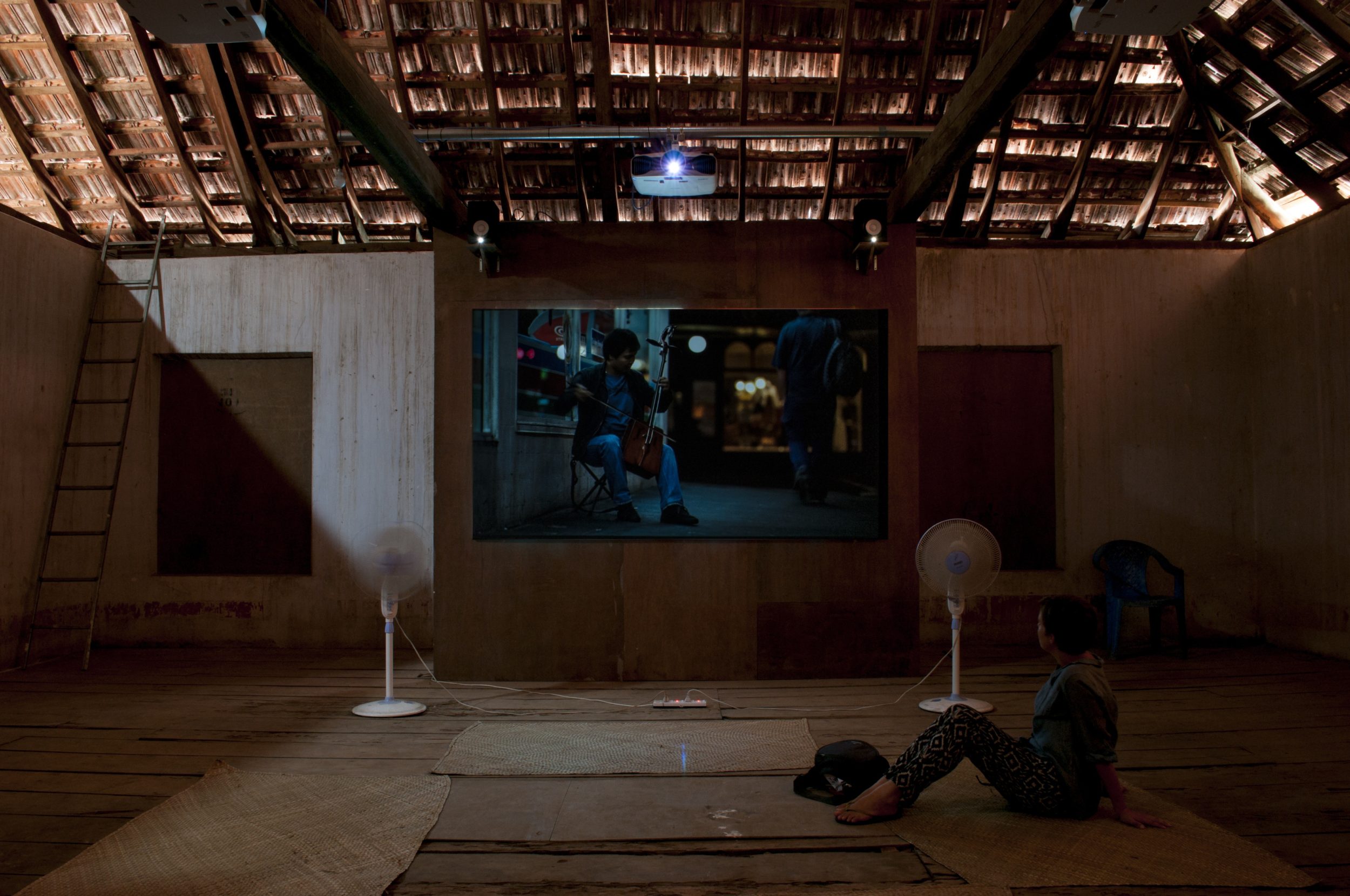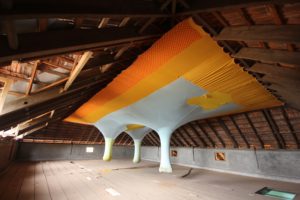Bose Krishnamachari, artist and artistic director of the Kochi-Muziris Biennale on putting together India’s first ambitious, artist-led endeavor. The third edition of the Biennale, India’s only truly international art event, opens in Kochi in December this year. If in the first year, the two founders, Krishnamachari and Riyas Komu curated the Biennale, in its second edition it was curated by artist Jitish Kallat. And for the third iteration, the founders have got Sudarshan Shetty on board.
The Beginning:
The process to hold the Kochi-Muziris Biennale was set into motion in 2010, when Kerala’s culture minister, MA Baby visited Mumbai, who has been supportive throughout. He said the Kerala government was interested in doing an event related to art. Riyas (Komu) and I jumped in and said, ‘Why not a biennale?’. But the idea of a biennale was first put forward in a seminar in Delhi, in 2005, by Vivan Sunderam and a host of other artists. However, they did not find any support from the state government.
Internationally, biennales are supported by the government or administration of the city it is held in. For example, the Gwangju Biennale in South Korea is supported by the government that runs the city. Fortunately, Baby and the Kerala government came forward to support the idea.
Once they green-lighted the project, we approached other people. The Kochi Biennale was an interesting project because this is the only one that’s started by artists. We are aware that working with artists can be very difficult. Our word had more gravitas because both Riyas and I are artists. Also, I have experience with travelling shows and am aware of the challenges involved.
Ibrahim Quraishi
On choosing Kochi as a venue
Because of its history and heritage. Muziris, an ancient seaport and urban centre lies close to Kochi. The region is being rejuvenated by the government. Muziris was the backbone of the biennale; the fact that centuries’ ago, this urban centre had trade relationships with 31 countries.
The 450 year-old city’s history is fascinating. Not many people know that the Jewish community, which was slaughtered everywhere, was protected here. Kochi itself has 13 communities and people here speak different languages. UNESCO is working with the local city council and INTACH to develop museums and restore buildings. We wanted to explore that idea of cosmopolitanism through the Biennale.
There is more to Kerala than Ayurveda and the backwaters. I believe in cultural tourism and the dominance of soft power, and through biennales and museums and art, you can cultivate that soft power. An article I recently read in The New York Times mentioned that in 2011, China constructed 390 museums. Unfortunately, our policy makers do not have that kind of vision; they aren’t aware of the use of soft power in furthering diplomatic relationships.
Angelica Mesiti
The Art Venues
We did not have any museum spaces so we had to develop them with the state government. Today, Durbar Hall is one of the best exhibition spaces in India. It was in a state of decay: we got Vikas Dilawari, one of the country’s best restoration architects, to restore it. The exhibits were spread across 14 venues.
On the role of art in modern society
India needs to understand the role soft power plays in not just the world of art, but in establishing diplomatic relations. And in attracting the right kind of travellers to India.
KPMG is doing a study on the Biennale, the first to be covered. The Google art project is putting up a segment on it in January. For a younger generation, or for those who did not visit the Biennale, it is important that they see the project.
Cultural tourists spend more than any other traveller. They are not backpackers. They spend 15 to 20 days travelling, exploring museums, galleries and other cultural aspects. If they visit Kochi, they also travel to Coonooor, Munnar and Wayanad. Cities with more art galleries and museums more often attract luxury travellers.
Ernesto Neto
A biennale has a ripple effect. It changes cities. For instance, after the Kochi Biennale, new spaces have opened up in Kochi. There is a café-cum-exhibition space called the Springr Studio in Mattancherry, where musicians jam and exhibitions are organised. Café Papaya in Ernakulam also has musicians playing and hosts art exhibitions. There is a new art gallery called Buddha. And Delhi’s Vadehra Art Gallery recently held the retrospective of sculptor A Ramachandran in Kochi. It has attracted a lot of attention in the culture space.
India has a lot of talent. The unfortunate part in India is that no one understands the potential of art or of museums. Of course, now there is the Kiran Nader museum in Delhi and KMoMA will open in Kolkata soon. Abhishek Poddar (who heads Tasveer, a body that promotes photography) is thinking of starting a museum in Bangalore. In Mumbai, the Chattrapati Shivaji Sanghralaya (formerly called the Price of Wales museum) is seeing a revival. It is because of the commitment of the director, Sabyasachi Mukherjee. Look at the good work Tasneem Mehta is doing with the Bhau Daji Museum, which also shows curated works besides its exhibits.
But we need to put in more money to even revive some of our old museums, like the Crafts Museum in Delhi, and set up more museums, and expand and revive the existing ones. The planning board and the planning commission should look at culture as a soft power. The culture spend in India is just 0.2 per cent of GDP.
On the need for more museums
Look at it this way – five million people visit the Tate Modern in London. Now, they are building a new wing to accommodate the people who come, with more exhibition and performances spaces. They are spending millions of pounds, out of which 60 per cent will be given by the British government, and the museum will raise another 40 per cent.
That is the only way you can grow and expand. Our policy needs to change.
On India’s art market
Things will always be fantastic for a few years, and then there may be a dip. Highs and lows are part of every business. I see that a lot of people are still collecting. They may not be buying at very high prices. If an artwork sold for Rs one lakh five years ago, they may now want it for Rs 25,000. But, a lot of people are still collecting art. I get a lot of calls every day. This is a good time for a new generation of collectors.
The hype may no longer be the same, but there are newer galleries today. When I was a student, there were only three art galleries, and none of them were globally renowned. Now, Mumbai itself has over ten good galleries. Indian galleries are showing in art fairs abroad. They are doing pretty well for themselves.






